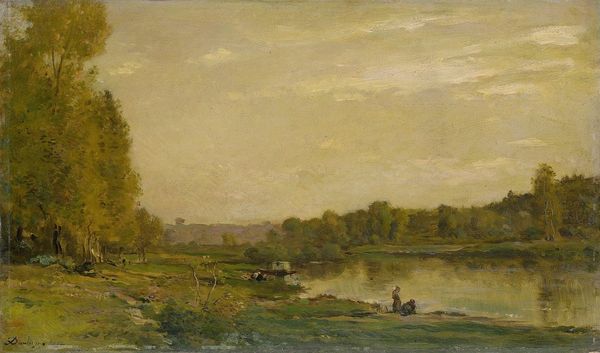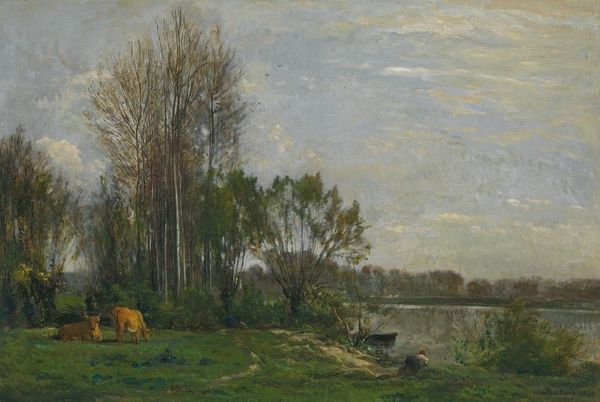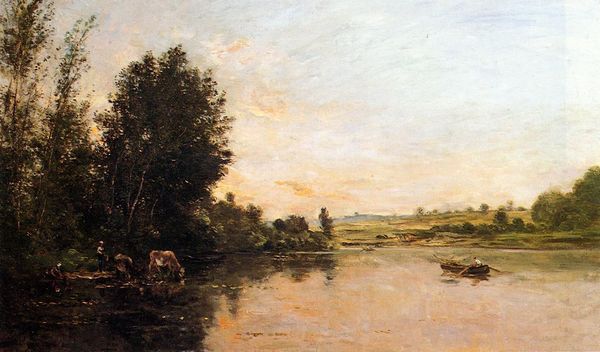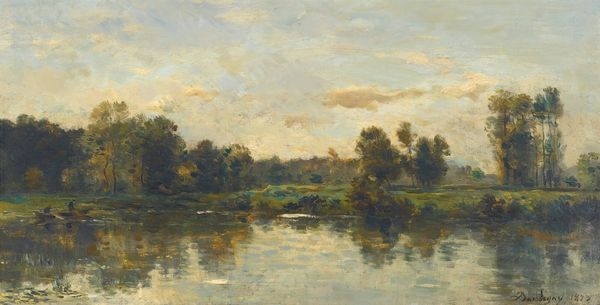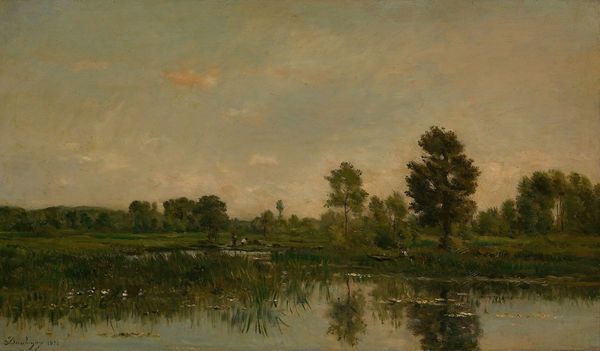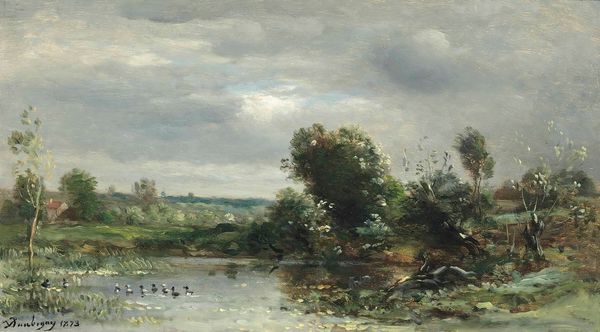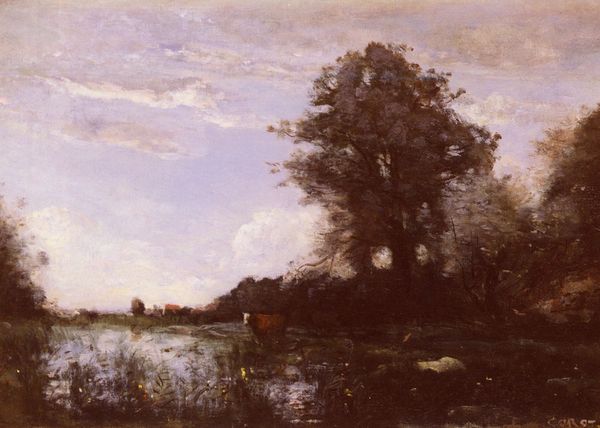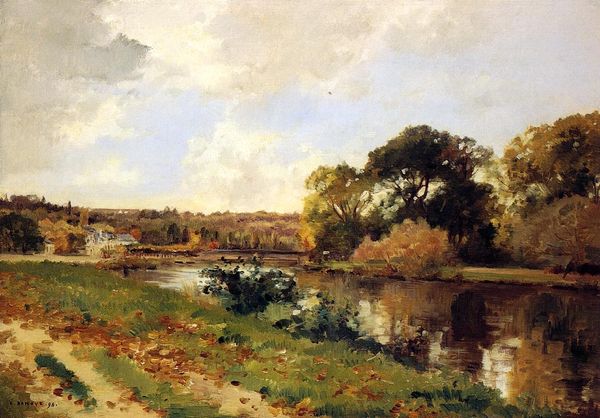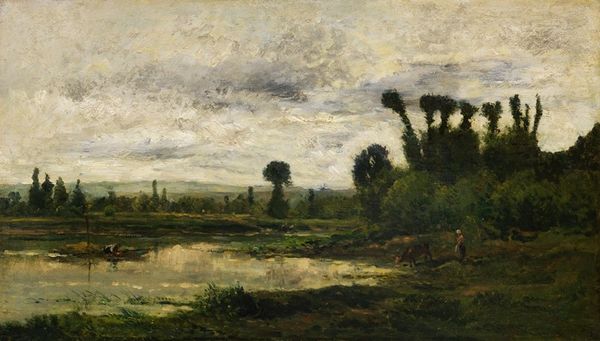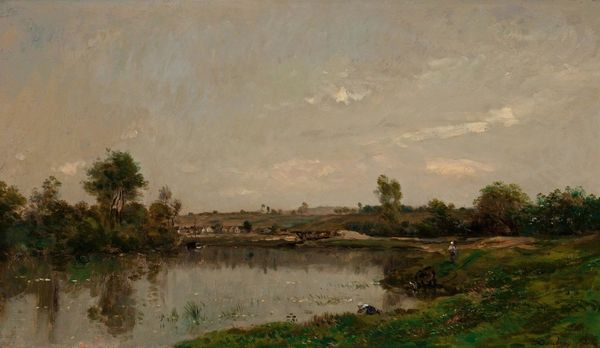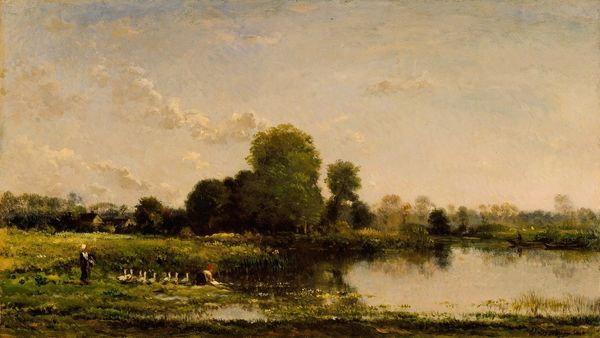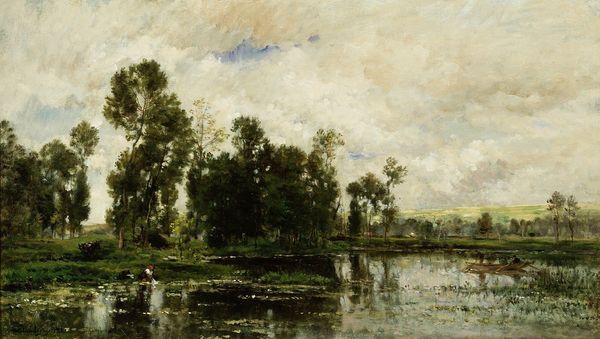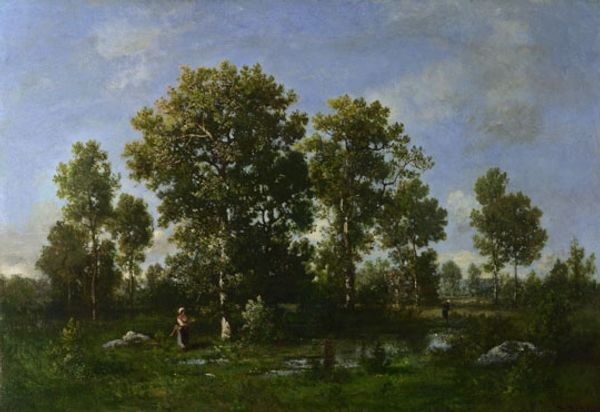
painting, plein-air, oil-paint, impasto
#
painting
#
impressionism
#
plein-air
#
oil-paint
#
landscape
#
impressionist landscape
#
nature
#
oil painting
#
impasto
#
genre-painting
#
history-painting
Copyright: Public Domain: Artvee
Curator: Charles-François Daubigny invites us to pause at the "Bord De L’Oise," a captivating oil on canvas completed in 1872. Editor: Right away, I'm struck by how tranquil this is. There's something profoundly peaceful in the muted palette and the way the light filters through the trees. Curator: Absolutely. Daubigny was a key figure in the development of Impressionism, and in many respects, pieces such as this can be seen to encapsulate a move toward capturing the immediacy of nature. The Oise River held particular significance; it was a source of inspiration, frequently revisited and explored in his works. Editor: I love how the reflections on the water create this sense of dreamy unreality, like the trees are reaching for another version of themselves. The subtle impasto adds texture and depth. There’s a world of calm right here. Did Daubigny paint this on site, as a plein air? Curator: Indeed. Daubigny championed the practice of painting outdoors, directly observing nature to achieve greater fidelity to light and atmosphere. It fostered the atmospheric quality we see rendered on the water here and became characteristic of Impressionism as a movement. But there's a deeper, perhaps less obvious symbolism at play here. Water is often symbolic of the unconscious, of emotions… Editor: ...and the trees act as silent witnesses, rooted in time and place, yet also swaying and adapting to the changing moods of the sky. They become the connection between conscious reflection and those deep hidden pools beneath the surface of our mind. Curator: Precisely. They become mediators between different layers of awareness, if you will. Even the presence of cattle carries significance here. For centuries in Western art they have served as symbols of prosperity and bucolic harmony. Editor: It all pulls you into this meditative space... a snapshot of simple pleasures that still resonates today, like catching the sunset after a long day, it touches the heart and memory, a serene counterpoint to the noise of modern existence. Thank you, Daubigny! Curator: Indeed. Daubigny's ability to imbue such apparent simplicity with nuanced emotional and symbolic depth is a testament to his enduring legacy. It shows art's enduring power to soothe and stir us.
Comments
No comments
Be the first to comment and join the conversation on the ultimate creative platform.
